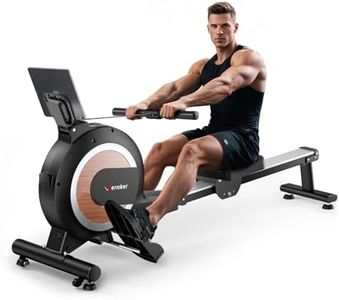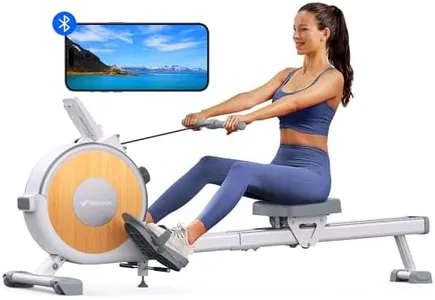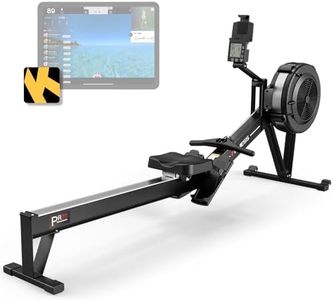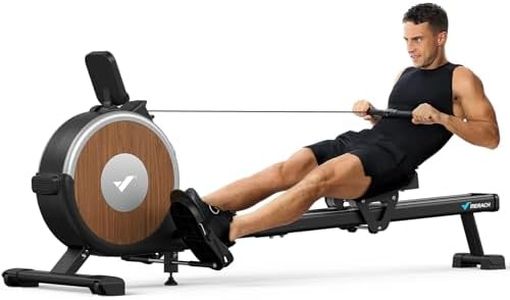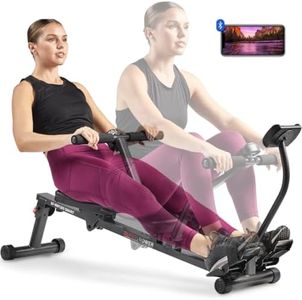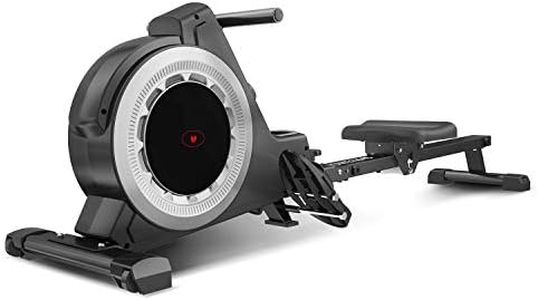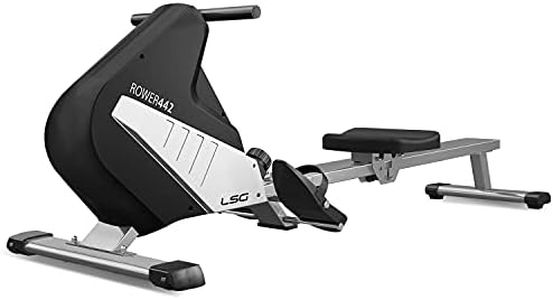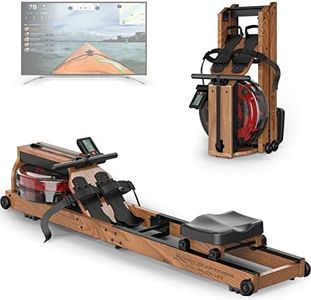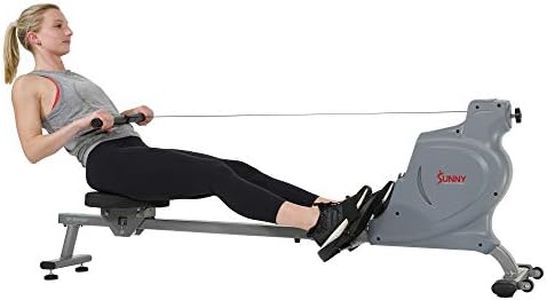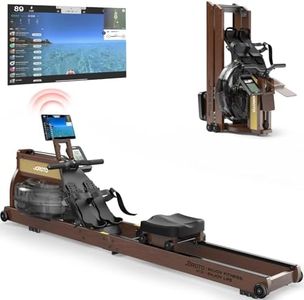We Use CookiesWe use cookies to enhance the security, performance,
functionality and for analytical and promotional activities. By continuing to browse this site you
are agreeing to our privacy policy
10 Best Rowing Machines
From leading brands and best sellers available on the web.Buying Guide for the Best Rowing Machines
When choosing a rowing machine, it's important to match the features and build quality to how and where you'll be using it. Think about your fitness goals, available space, and how often you plan to use the machine. The right rowing machine can help you stay motivated, protect your body from unnecessary strain, and keep your workouts enjoyable and effective. Understanding the core specs will make it easier for you to pick a model that fits your needs and comfort preferences.Resistance TypeResistance type refers to the mechanism that provides the 'drag' or effort as you pull the handle. The most common types are air, magnetic, water, and hydraulic. Air resistance offers a smooth and responsive feel, getting harder as you row faster. Magnetic resistance is usually quieter and allows you to set definite resistance levels, which can be great if you like consistency. Water resistance mimics real rowing and offers a life-like feel, including swishing sounds. Hydraulic rowers are more compact and tend to be quieter but may not offer the same smoothness. When picking, think about your noise tolerance, space, and preference for variable versus fixed resistance.
Size and StorageThe size of the rowing machine is about the space it occupies both when in use and when stored away. Machines vary from long, full-sized models to compact, foldable ones. If you have a dedicated workout area, a larger machine might not be an issue, but for smaller spaces or shared rooms, foldable or short models are easier to fit and store. It's important to consider how much room you have and how easily you want to be able to move or put away the machine after workouts.
Weight CapacityWeight capacity is the maximum user weight the machine can safely support. Higher capacities indicate sturdier build quality and better stability, especially important if multiple people of different sizes will use the rower. Segments often range from about 220 lbs up to 500 lbs. Make sure to choose one that is comfortably above your own weight to ensure both safety and durability over time.
Monitor/Display FeaturesThis spec involves the onboard display that shows workout data, such as time, distance, strokes, calories, and sometimes heart rate. Some basic displays show only essential stats, while advanced ones offer programmable workouts and Bluetooth connectivity for fitness apps. If you like tracking your progress or need motivation from following set workouts, pick a machine with a more detailed and interactive display. If you prefer simplicity, a basic monitor will do the job.
Adjustability and ComfortAdjustability refers to how well you can modify the rower settings to suit your body and preferences, including footrests, seat padding, and handle grip. Comfort matters especially for longer workouts. Some rowers have wider or more cushioned seats and straps or footrests that adjust to different shoe sizes. Try to choose a rower that lets you personalize these areas to avoid discomfort or injury and to ensure your posture is right for effective exercise.
Noise LevelNoise level refers to how loud the machine is during use, which can depend on the resistance type and construction. Air and water rowers tend to be louder due to moving parts and water swishing, while magnetic and hydraulic rowers are quieter. If you plan to row early in the morning or in shared spaces where noise is a concern, look for quieter models. If noise isn't an issue, focus on other features.


